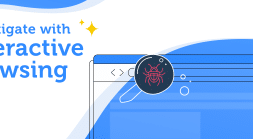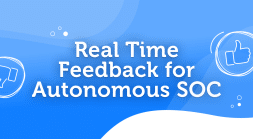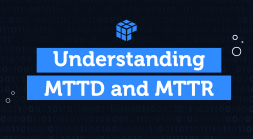A few years ago leading cybersecurity professionals and industry analysts were publicly saying that even with advances in artificial intelligence and machine learning, the “Autonomous SOC” was an unrealistic pipe dream.
This didn’t hold back our team’s vision for the Autonomous SOC platform, which achieved notable milestones and a 400% increased of its customer base last year. As Intezer continues to prove our innovation solution for automating security operations can successfully work for customer after customer, we think it’s time to step back and explain what “Autonomous SOC” means.
Table of contents
What is Autonomous SOC?
Autonomous Security Operations Centers (SOCs) are innovative solutions designed to address the acute talent shortage in security teams and the broader cybersecurity industry. Employing artificial intelligence and machine learning with a variety of techniques, these systems simulate the decision-making and investigative processes of human analysts.
Autonomous SOCs either serve as a technology-driven replacement for managed SOC services or automate the functions of an internal Tier 1 team. This intelligent automation allows security teams to concentrate on genuine incidents, eliminating alert fatigue and the burden of repetitive manual tasks. This increases efficiency and provides comprehensive analysis about every artifact and alert, to significantly enhance the focus on critical threats and reduce risk.
How Does Intezer’s Autonomous SOC Platform Work?
Intezer’s Autonomous SOC platform automates and streamlines the entire process of alert triage. This AI-driven product acts as an extension of your security team, ensuring that every alert is meticulously investigated at a granular level. It integrates seamlessly with existing security tools like endpoint security, SIEMs, reported phishing pipelines, and more. It automatically analyzes and correlates alerts, and escalates serious threats with contextual insights and clear remediation actions (only 4% of alerts on average are escalated).
This approach not only dramatically reduces the volume of alerts that require human intervention but also ensures no threat is overlooked, regardless of its severity. By leveraging generative AI, genetic analysis, memory analysis, and auto reverse-engineering, the Autonomous SOC platform enables organizations to quickly adapt to evolving threats with minimal setup and without the need for extensive cyber talent. (Learn more in our blog posts here about how the Autonomous SOC platform works and how Intezer investigates alerts.)
The AI Framework of the Autonomous SOC Platform
Intezer’s architecture and AI technologies are designed to avoid the “black box” problem that other AI tools experience, when they produce mysterious results that are difficult to explain. By using different types of tested AI models, we can apply them to the specialized tasks where they will be the most effective. At the heart of Intezer’s Autonomous SOC platform are several types of cutting-edge AI technologies:
- Proprietary AI Models: Custom-built AI algorithms (aka machine learning) designed to optimize threat detection, analysis, and incident response.
- Advanced Large Language Models: Private instances of leading LLMs (also known as generative AI) for advanced analysis and decision-making.
- Genetic Analysis: A technique unique to Intezer that simulates the capabilities of smart reverse engineers, identifying code reuse and similarities to understand potential threats at a genetic level.
This comprehensive AI framework enables Intezer to mimic and augment the expertise of human security analysts.
AI-Driven Capabilities in Autonomous SOC
These AI models are utilized across several different components:
- Escalation Decision Making: AI is involved in the decision-making process for determining the need to escalate alerts or not.
- Verdict Calculation: AI models are used to calculate verdicts of various artifact analyses as part of the automated alert triage process.
- Threat Classification and Malware Family Attribution: In conjunction with Intezer’s proprietary Genetic Analysis technology, AI models are used to classify threats and attribute them to certain malware families and threat actors.
- Decision Making for Further Evidence Collection: AI is involved in the decision for when additional evidence is necessary for a comprehensive analysis (such as deep endpoint forensics).
- Analyzing Text-Based Evidence: AI analyzes textual evidence like command lines, email bodies, and email HTML content, extracting valuable insights that are helpful for both the automated triage, as well as assisting a human analyst in further investigating escalated alerts.
- Analyzing Scripts: Scripts written in Python, macros, PowerShell, etc., are analyzed by AI to identify malicious activities and conduct investigation.
- Analyzing Suspected Phishing Emails: AI evaluates emails for signs of phishing, as part of Intezer’s user-reported phishing pipeline automation.
By integrating different types of artificial intelligence in these and other areas, Intezer effectively simulates the expertise of security analysts, ensuring thorough and swift response to cyber threats.
The Rise of the Autonomous SOC
Some types of AI models like Artificial General Intelligence (AGI) and artificial superintelligence, known as Strong AI, are still only theoretical concepts. At Intezer, we’re focused on delivering pragmatic AI-driven, autonomous solutions to make security operation centers more efficient and effective right now.
Ultimately Autonomous SOCs, with their AI-driven capabilities, offer a practical solution to the cybersecurity talent shortage by automating routine tasks and simulating human decision-making in alert investigations. Intezer’s approach demonstrates how new AI technology can be game-changing for security operations, allowing teams to focus on real threats.





